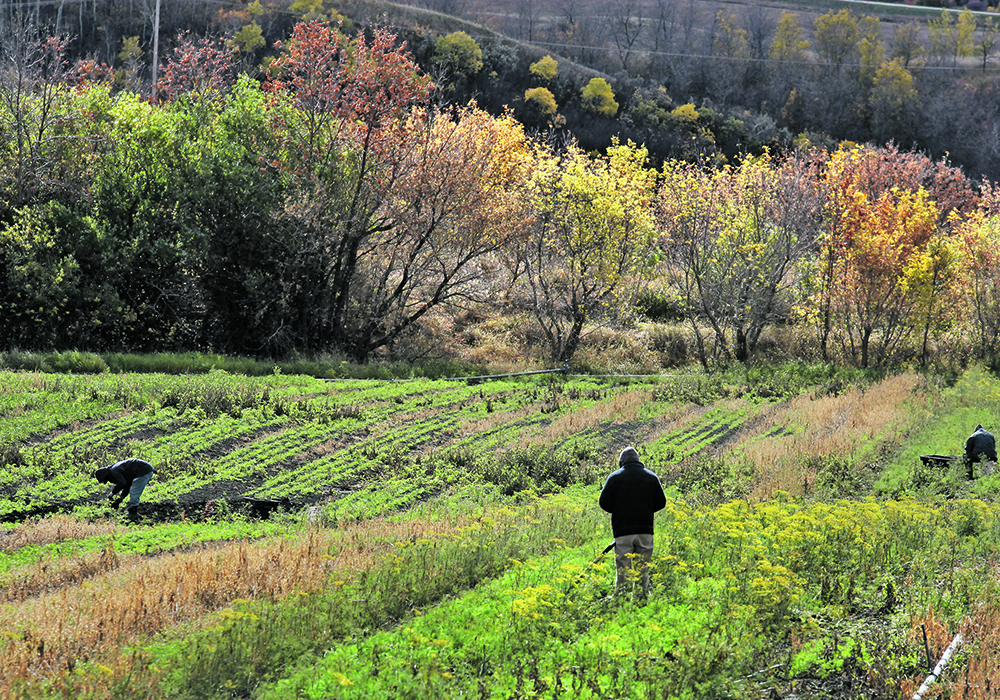Former Bank of Canada governor says 50 years of ‘plentiful workers’ coming to an end as baby boomer generation retires
Most farmers and managers in Canada’s agri-food sector already know that something has changed in the labour market.
To stay in business, producers are using temporary foreign workers from the Philippines, hiring seasonal help from Australia and providing housing or a truck to keep employees around.
Such creative solutions for the labour shortage will not be temporary, said the former governor of the Bank of Canada.
A lack of workers could be the new reality.
“We’ve been in a world of plentiful workers for about 50 years,” said Stephen Poloz, who spoke at CropConnect, an agricultural trade show held mid-February in Winnipeg.
Read Also

Canola oil transloading facility opens
DP World just opened its new canola oil transload facility at the Port of Vancouver. It can ship one million tonnes of the commodity per year.
“(We’re) returning to a world where workers are in relatively short supply.”
Poloz explained that the baby boom following the Second World War created an era where a massive number of people entered the labour market in the late 1960s and the 1970s. The millions of people provided businesses, including farmers, with a consistent supply of full-time and part-time employees.
Now that baby boomers are retiring, in huge numbers, the period of abundant labour is over.
“That was an abnormal bulge in global populations,” said Poloz, who was Bank of Canada governor from 2013-20.
Chris Raupers, who operates a 6,500 acre grain farm near Cardale, Man., has adjusted his hiring practices in response to the lack of domestic farm workers.
For years, Raupers has hired workers from Europe for three to six months during the growing season. About 90 percent of the time, the workers from Europe were productive employees on Raupers’ farm.
“I’ve had fantastic crews,” he said. “There is a humongous amount of young people (from other countries) out there who want to work, and are willing to grind long hours… and are not afraid to sweat and get dirty.”
Using temporary workers from Europe, or other creative approaches, could soon become standard practice for business owners in the ag sector, Poloz said.
The Canadian government is planning to increase immigration to deal with the labour shortage in multiple industries. That could make a difference, but there are only so many migrants in the world, and a limited number with the skills to work in agriculture.
“Other countries are seeing the same phenomenon (labour shortage) and they’re going to compete more for those global migrants,” Poloz said.
That means Canadian farmers, agri-businesses and agri-food companies will need to invest more in recruiting and retaining workers.
That could be something simple, like increasing wages, or a more nuanced approach, such as providing housing, pensions, language training and other benefits.
“It will take us a while to realize this, but companies that get in front of it will be the ones that get the workers they need now… and they’ll turn out to be very loyal workers,” Poloz said.
“In a world where people will be changing jobs all the time… loyal workers will be worth a lot to a company. It’s not just about the price (of labour) but what risks are you reducing? The risks of not having enough people.”
Dealing with the worker shortage in rural areas may require some inventive government policies — maybe re-visiting a strategy used 100 to150 years ago when new immigrants were given a plot of land in Canada.
“That’s why people like my ancestors showed up,” Poloz said. “What did we do to encourage that? We gave away of land…. That sort of incentive could be the sort of thing that people think about.”


















